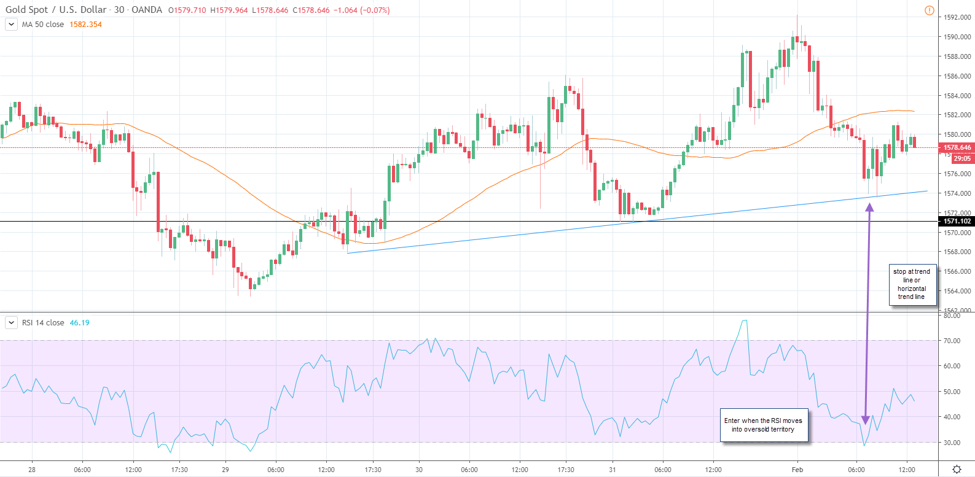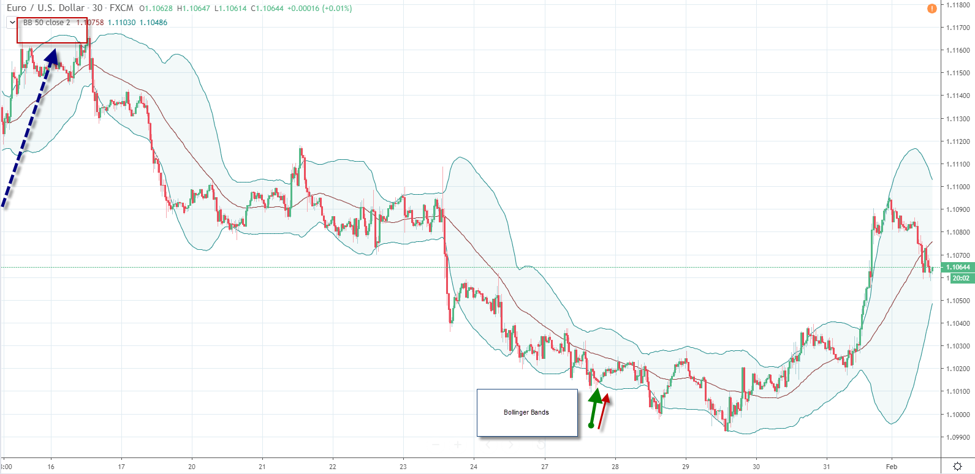- Creating a Plan
- Paid to Take Risks
- Allocating Your Capital
- Risk Management for Different Strategies
- Systematic Day Trading Risk Management
- Discretionary Day Trading Strategies
- How to Measure Risk
- Different Types of Strategy Returns
- Here is the Math
- Here are some Techniques
- Determining a Stop Loss
- Using Technical Analysis
Don’t ride by the seat of your pants!
The success of your day trading activities will be purely a function of your ability to manage risk. Whether you are planning to use a discretionary strategy or one that is purely systematic, the key to your success will be a business plan that will make money.
The most efficient way to start the process is to determine how much money you are willing to risk.
Creating a Plan
You need to think about day trading as a business. You need to have a clear idea of how much investment capital you plan to allocate to your day trading activities, before you start. This could change over time, but you need to start somewhere.
Day trading should be one of several diversified investment strategies you allocate from your portfolio. Additionally, the funds that you use for day trading should be discretionary and not for essentials such as food and shelter.
Once you have allocated capital to your day trading activities, you can then try to determine if you will use one, or multiple trading strategies to make money.
Paid to Take Risks
Remember you are paid to take risks. When you day trade, your financial goals are to make some premium to the risk-free rate of return. The risk-free rate is how much you can make without any risks.
An example is a US Treasury bill.
If you hold a 1-month bill for the entire month you will receive the return stated and have the full faith of the United States government as your borrower. There are several questions you should ask yourself when determining how to allocate capital to your day trading activities.
Allocating Your Capital
- Are you going to day trade all your money using one strategy?
- Or would you consider multiple strategies?
- Are your strategies going to be discretionary?
- Or only systematic and automated.
- Are you going to be the only person who trades your account?
- Or are you planning to have someone else manage some money?
You should abide by the basic rule which is to avoid putting all your eggs in one basket. There is a concept call diversification.
This concept says that when you allocate your money to more strategies you reduce the risk that one strategy will fail and terminate your day trading activities.
So, if you have 3-strategies that make money and one that loses, you will likely have a winning day trading experience.
Risk Management for Different Strategies
There are two basic categories of day trading strategies.
- Discretionary
- Systematic/Automated
You can also combine the two. A Discretionary strategy allows you the leeway to override some signals that generally produce a trading opportunity.
A systematic approach is one where you enter a trade when a signal is alerted and manage the risk based on predetermined criteria in an automated manner.
Systematic Day Trading Risk Management
A systematic approach to day trading means that you avoid overriding a trading alert. Using this approach removes some of the human element which can interfere with the strategy’s success. The risk management of a systematic approach can be back tested to determine if the approach worked in the past.
There are several benefits to using a systematic approach. Back testing a sample of data can provide you with the confidence that you need to execute a trading strategy. Once you are comfortable with a back-tested day trading strategy, make sure you test it using real-time data before you begin to risk real capital.
You also might want to consider using a paper trading account to practice the strategy and make sure it is profitable.
Discretionary Day Trading Strategies
If you plan to use discretion, you should map out your risk management before you place your trade. While it’s not imperative that you use the same risk to reward formula on every trade, it can be helpful to stick to a routine.
How to Measure Risk
Risk is the amount of money that you could lose on a trade. It is not the realized loss but instead what could be the realized loss. The best way to measure loss is to predetermine how much you are willing to lose.
Before you place your trade, you want to have a clear idea of where you will exit the trade with both a stop loss level and a take profit level.
Just by going through this process you will limit your risk. Traders that avoid formulating a plan, will face unexpected situations and will not have a plan on how to deal with it. Your risk should be predicated on your strategy returns.
Different Types of Strategy Returns
- To successfully generate solid returns, you need to win more than you lose, or gain more on winning trades than you lose on unsuccessful trades.
- If your wins more than it loses, the amount you win could be either equal to or slightly less than the amount you lose.
- Alternatively, if the strategy you plan to employ will have more losers than winners, than the amount that you gain on winning trades needs to be more than the amount you lose on unsuccessful trades.
Here is the Math
Let’s assume that you plan to execute 9-trades per day, across all the securities that you will day trade. If you win more than you lose, you can afford to win the same amount that you lose to have a successful strategy ((5-winners*$100 = $500) – (4-losers*$100 = $400) = $100).
Alternatively, if you lose more than you win on the same 9-trades you will need to win more than you lose on each trade to be successful ((4-winners * $200 = $800) – (5-losers * $150 = $750).
You can use this strategy to form a reward versus risk ratio. This will allow you to determine if your plan will be successful over time. If your risk management plan does not produce a strategy that will be financially successful, then you need to modify the plan until you have one that works.
Here are some Techniques
There are several ways to determine the appropriate stop loss and take profit levels that will formulate a risk management plan. When you are day trading the goal is to exit your positions before the day ends.
This means you should know how much each security you plan to trade, moves per day.
You can start by determining the daily volatility of the product you plan to trade. This will give you an idea of how much you can make or lose on average during a day. You can calculate this information yourself or look for it online.
If you are trading forex you can look for the amount in pips, or percent. If you are trading stocks the volatility might be in dollars.
Determining a Stop Loss
One way to start determining your reward to risk ratio is to formulate your stop loss level. Your stop loss level could be a percent per each trade. Alternatively, it could a dollar amount or below a specific chart point trigger.
A percent return is one of the easier calculations. Your first step is to determine whether your trading strategy can be successful. The best way to do this is to back-test it. You can even do this manually by looking to see if it worked in the past. The next step would be to test your strategy in real-time. You can use this same method for a dollar figure instead of a percent figure.
Using Technical Analysis
Many traders often use technical analysis using support and resistance levels to determine where they should entry or exit a position.
You might consider using trend lines or moving average to find support and resistance levels that will help you determine the best place to take profits and stop loss. In the chart above a trader might be short selling gold, with a stop loss at the 50-period moving average, and a take profit at an upward sloping trend line.
You might consider a trading strategy that uses a momentum oscillator such as the relative strength index (RSI) which produces overbought and oversold levels. This could work in conjunction with support and resistance levels as your risk management triggers.
For example, you might buy when the RSI moves into oversold territory and rake profits with it reach the 50-period moving average. Your stop loss could be an upward sloping trend line or a horizontal trend line.
You might also consider using a Bollinger band strategy. Bollinger bands define the most recent range using volatility (the standard deviation). You can also alter the Bollinger bands for intra-day data which could help you define your take profit and stop loss levels.
Bottom Line
To successfully trade the markets, you need to develop a risk management plan. Your plan should be formulated before you place a trade. Day trading offers risks, where the returns should be above the risk-free rate of return.
One way to avoid one day trading strategy ruining your entire day trading activity is to use multiple day trading strategies. This type of diversification will help you avoid the risk of ruin.
There are also several ways to define risk management. You can use simple methods such as the percent you will gain or lose on a trade. You can also use technical analysis techniques, which will help you pinpoint your entry and exit levels.
Before you start to trade, calculate the potential risk/reward ratio. This will help you determine your financial goals related to the risk you will assume. Remember you get paid to take risks beyond the risk-free rate of return.
You need to understand that you will not win every trade. You are trying to formulate a plan that will follow your risk management plan allowing you to create a successful day trading strategy.





